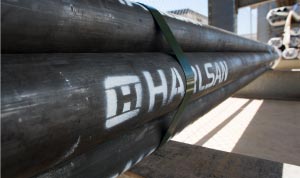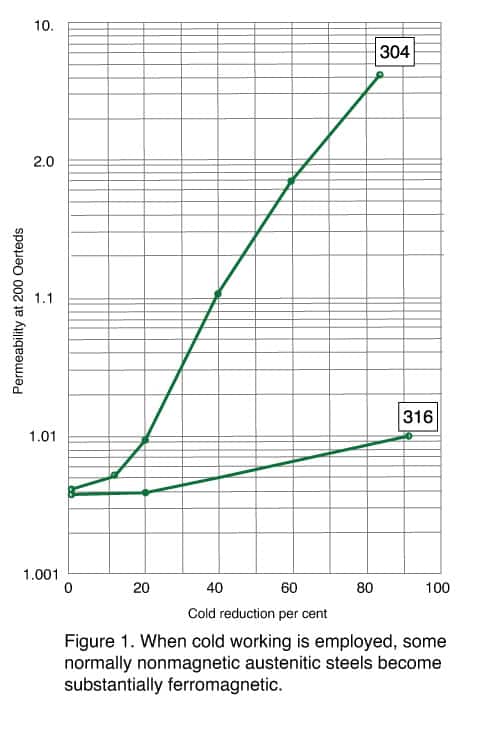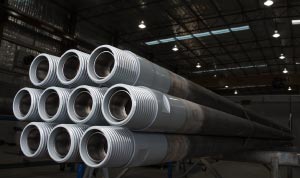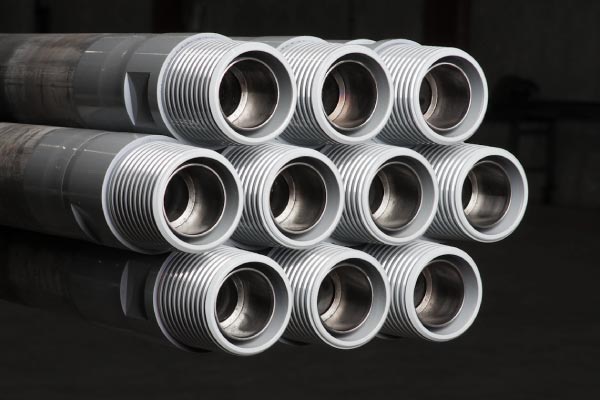304 vs 316 Stainless Steel
The Difference Between 316 Stainless Steel Rods and 304.
Did you know that if your RC drill rig is currently equipped with 304 stainless steel drill rods there’s a good chance your client’s hole survey is going to produce false data and that this is likely your fault?
We’re going to explore the difference between 304 and 316 stainless steel grades, the impact of it on your client, and the longevity of your equipment.

Why You Should Use 316 Stainless Steel Rods and Steer Clear of 304
When it comes to purchasing stainless steel drill rods, a lot of people don’t realise why there’s such a significant difference in cost between one rod from another. At the end of the day, aren’t they all just stainless steel?
The big difference is the type of steel that was used when the drill rods were manufactured. You have the cheaper, inferior 304 stainless steel grade or the more premium 316 stainless steel grade.
But what difference does that really make to you as a drill company, to your equipment, and to your clients?
The Difference Between 304 and 316 Stainless Steel
The difference between 304 and 316 stainless steel is very commonly misunderstood, or not known at all, and can have a huge impact on the reliability of survey results, and what you’re achieving for your clients. Let’s explore this further.
304 stainless steel contains a mix of chromium and nickel and is slightly responsive to magnetic fields. The addition of the nickel (8-10.5%) modifies the physical structure of the steel and then, theoretically, makes it non-magnetic. However, through extended periods of continuous motion in one direction, and the resulting friction, grade 304 stainless steel can become slightly more magnetic.
Additionally, if the steel alloy is mechanically deformed during the manufacturing process the internal structure of the steel may change causing the rods to be partly magnetic from the moment they leave your supplier’s warehouse. They haven’t even seen pay dirt yet.
On the other hand, 316 type stainless steel is a molybdenum-alloyed steel and contains a higher concentration of nickel than 304 does, approximately 10-14%. The result is the 316 type is negligibly responsive to magnetic fields, making it perfect for applications where non-magnetic metal is required.
As we can see there is a tremendous difference between 304 and 316 type stainless steel.
demonstrates the impact on stainless steel becoming magnetised as it continues being cold worked.
As we can see there is a tremendous difference between 304 and 316 type stainless steel.

| Type 304 | Type 316 | |
| Chromium | 18-20% | 16-18% |
| Nickel | 8-10.5% | 10-14% |
| Molybdenum | – | 2-3% |
What Does That Mean and How Does Magnetic 304 Stainless Steel Impact Drilling?
Most drill holes deeper that 100m are now routinely surveyed using some form of down hole survey tool in order to recover the true hole path. Most often, this is done using a magnetometer and a gyro that rely on the earth’s magnetic field to conduct their readings.
Using magnetized drill rods can cause problems in the surveying process.
If your 304 drill rods have been magnetized through continuous use, or in the manufacturing process, there is significant risk that your clients’ magnetometer and gyro readings will be thrown out, resulting in incorrect data.
Getting out in the field and getting those meters under your belt is fantastic but nobody wants to deal with the potential of having to redrill holes because the client didn’t get the data they were meant to due to their readings being inaccurate or false altogether.
All of this can unnecessarily add to exploration costs and can add to your crew’s time out in the field when they should possibly be heading to the next job.
The best thing that can happen in this scenario is that the client writes the data off as erroneous and moves on with their drill program. This is hardly an ideal situation and may well be a considering factor the next time the client picks their drill company of choice.
Why You Should Use 316 Stainless Steel Rods
Thanks to the higher concentration of nickel in 316 type drill rods, these are significantly more resistant to becoming magnetised by continuous friction and therefore less likely to negatively impact your client’s data.
Here at Harlsan, we manufacture some of Australia’s toughest RC drilling equipment, including our highly sought-after 316 stainless steel drill rods.
We never substitute for cheaper 304 stainless steel, as it is our mission to provide the best quality we possibly can, because we know that’s what you want to deliver to your clients.
Did you know 304 stainless steel in a magnetic state is also much more likely to rust and coupled with the rough conditions that drill rods must endure, this process is only expedited?
The addition of molybdenum, up to a maximum of 3%, to 316 steel also makes it extremely corrosion-resistant. It can withstand corrosive attack by sodium and calcium brines, hypochlorite solutions and phosphoric acid.
.

That’s a Wrap On Stainless Steel Drill Rods
In short, drill rods made from 316 type stainless steel provide a better result all around.
Your client can rest easy knowing you’re using premium material giving accurate results and you can rest easy knowing your equipment will last you longer than rods made from the inferior 304 stainless steel.
So, the next time you need to order a set of drill rods, beware of the cheaper stainless steel rods claiming to be 316 grade. Ask your supplier about the type of steel used in the manufacturing process, and if it’s not 316 come talk to us.
We can supply mill test certificates to authenticate our 316 grade.
After all, there’s a reason we’re known for dedicating ourselves to manufacturing high-quality equipment that will last longer, keeping you drilling for longer.
We can supply tough Australian RC drill equipment to you, no matter where you are in the world.
Keep Up With Harlsan Product News & Innovation





 Youtube
Youtube LinkedIn
LinkedIn Facebook
Facebook Instagram
Instagram